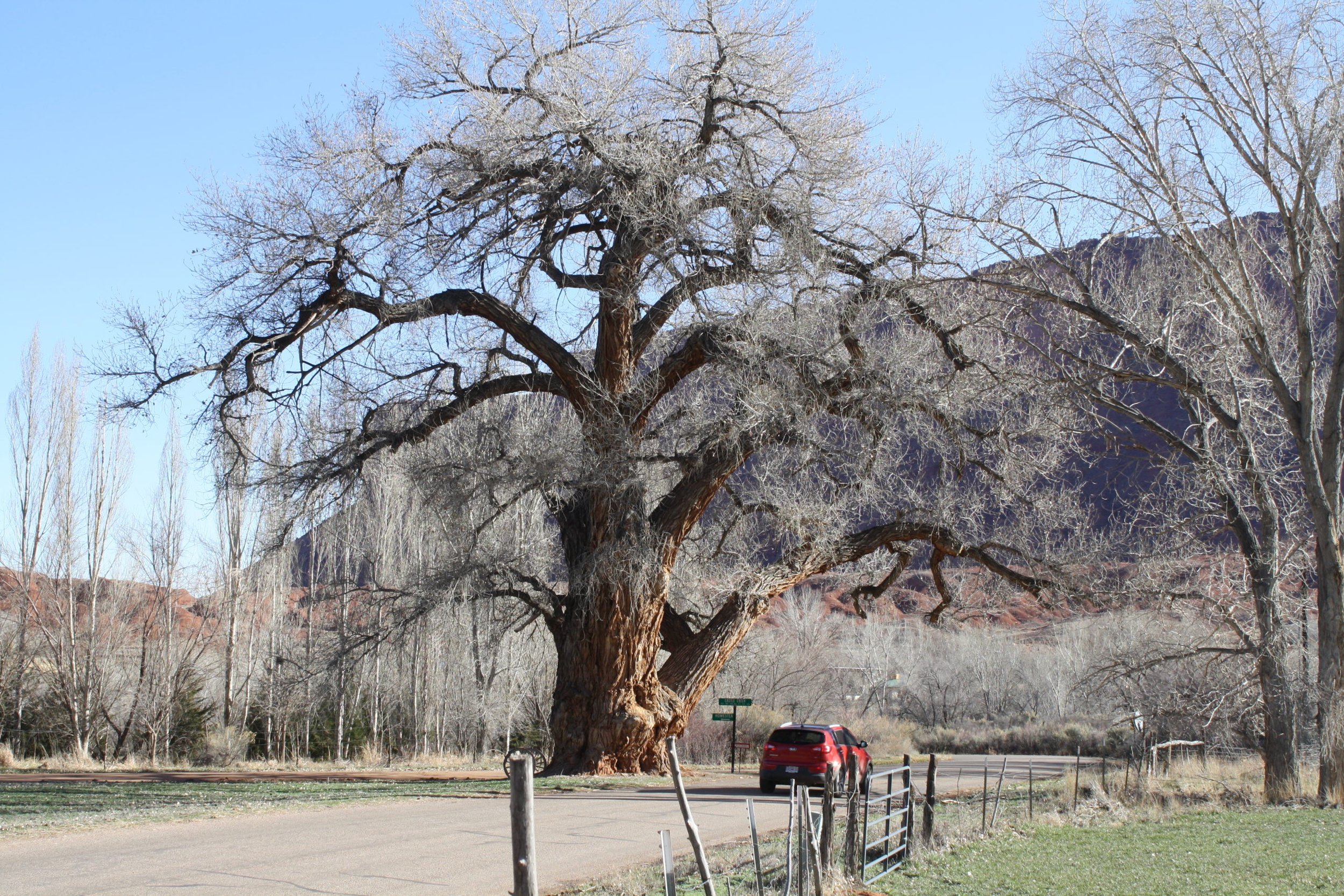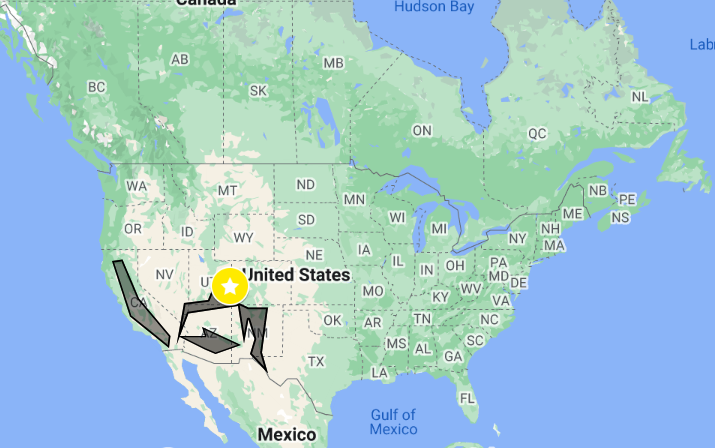The Naiads of Castle Valley
Fremont Cottonwood (Populus fremontii)
Pope Lane in Castle Valley, Utah is hardly what comes to mind when one thinks of a more “traditional” street. Rather than your average concrete-entombed thoroughfare in the suburbs of some metroplex, Pope Lane is more a path of gravel, stretching forth from the eastern walls of the valley before it ends in a sagebrush-lined cul-de-sac nearly a mile from the opposing valley wall. As you turn left onto Pope Lane, Castleton Tower, a large monolith of sandstone, is seemingly perfectly aligned with the road on the horizon. The forlorn behemoth seems to keep watch over the valley, separated from its kin at Fisher Towers, standing solemnly through sun-arid days and frigid nights.
Within the brushy five acres of 270 Pope Lane, amongst the bottom land dwellers of cheatgrass, rabbitbrush and big bluestem, stands a lonesome Fremont Cottonwood sapling, known to western science as Populus fremontii. The name Populus derives from the Latin word for “the people,” of which trees are notably not a member. Yet, what does the tree care for frivolous names derived from European antiquity? Even more, does the tree begin to care for the other half of its scientific nomenclature, ironically having obtained it from American politician and explorer John C. Fremont, who, by virtue of his desired westward expansion, helped to encourage people to homestead in the West, thus bringing about the destruction of his eponymous tree’s native riparian habitat.
The cottonwood, either unaware or indifferent towards the gratuitous names and classifications bestowed upon it by humans, chooses instead to let its heart-shaped leaves glisten in the salubrious breeze. In a manner quite reminiscent of its cousin, the quaking aspen (Populus tremuloides), the Fremont Cottonwood’s leaves flutter in the wind, giving off an almost iridescent shimmer that is distinctive amongst most plants upon these five acres.
Down the valley from Pope Lane, where collected runoff from the La Sal mountains makes a final gathering before flowing into the Colorado River, stands a large grove of both mature and infantile Populus fremontii alike. Sinking their shallow roots into the subsurface water table connected to the sinuous Castle Creek, this riparian ecosystem is an optimal living space for the native Fremont cottonwoods. Another cottonwood, the narrowleaf (Populus angustifolia), also makes its home in this shaded refugium, often crossbreeding with the Fremont and leading to hybridization of the two species. Within this water-sculpted ecosystem, the cottonwoods provide stability; their roots prevent frequent erosion of banks and their leaves provide ample shade to cool the gentle waters below. Even in death, the fallen trunks of cottonwoods, whether by their own faculty or gnawed upon by beaver, provide complexity and sinuosity to the stream. Perhaps it is within a certain justification to think of cottonwoods as the closest animate equivalent to the Naiads, the Greek mythological beings who presided over rivers.
It is here within this riparian grove where many Spring seasons ago a single diecious cottonwood, with its reproductive catkins propagating from its deeply furrowed trunk, began to disseminate its thousands upon thousands of seeds. From March to April, the many cottonwoods spread their gentle white seeds amongst the windblown valley. One singular seed, by some unfortunate stroke of luck, blew to the southeast, settling amongst the tired, formerly cattle-grazed land of 270 Pope Lane. Yet, the seed was not as unlucky as it originally may have seemed, for the seed’s final resting place was below a rain gutter attached to the roof of a house built of straw. Fremont Cottonwood requires almost complete inundation in moist soil in order to germinate. For our seedling, the conditions within the silt-sandy soil beneath the water spout were practically the most favorable conditions for germination one could ask for a little cottonwood seed. At 270 Pope Lane, the future cottonwood seedling would be protected on almost all sides from any pesky ungulates who might to decide to take a nibble upon its tasty buds. And so, with a veritable goldilocks’ conditions for growth, the seedling began to grow.
From the Fremont Cottonwood sapling’s current vantage point, it is well within clear line of sight of Castleton Tower. In a certain sense, the bare exposed sandstone of Castleton tower and the little Populus fremontii sapling share several things in common. Isolated and lonely from their kind, they stand, baking in the heat of the Utah sun. Although in different time scales, they someday will both fall after being subjected to the forces of wind and water, disseminating smaller fragments of themselves on the wind, propagating themselves across the open valley floor.
By Nathaniel Martin


